Want to contribute to this article?
Approximately 56% of quality professionals said they manage quality using Word and Excel documents using shared folders in the 2020 Global Quality Survey.
While shared folders such as SharePoint, Dropbox and OneDrive for your Excel and Word documents might seem like a low-cost, quick and easy solution, over time, these systems cause more damage and cost a lot more than you may initially think.
In this article, we've shared seven ways managing quality processes using excel and word files puts your business at risk.
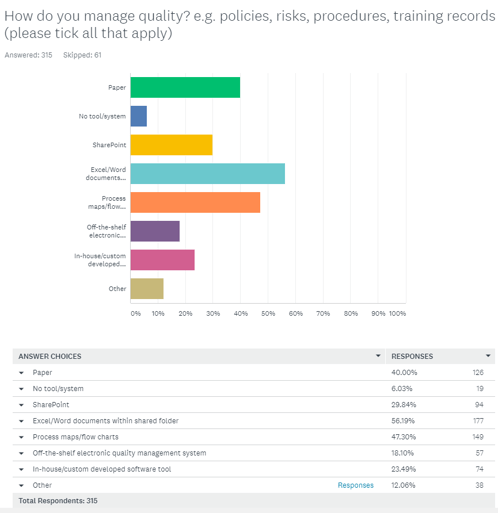
1) Shared folders do not embed your processes
Shared files rely on your workforce reading, understanding and constantly implementing your quality processes, policies and procedures.
This often means there is a lot of room for interpretation and human error - creating all sorts of data which you can't really use.
For example, if your complaint management process is currently in a spreadsheet or a word document, you may find people either forget or don't read the process document so steps aren't followed and information is missing.
When using software such as Qualsys's EQMS, you can still link to any type of document, but you can also use forms which specify exactly what information is needed. This brings your processes to life, ensuring you get the right information that your business can use for strategic decision making.
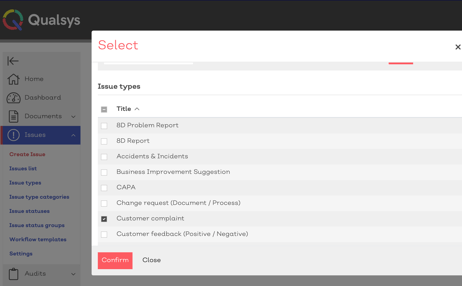
[Image: Capture the data fields and types you want in EQMS]
2) Shared systems often require expert knowledge
A former Qualsys customer recently visited us after their HQ decommissioned EQMS approximately four years ago and migrated their entire management system to SharePoint.
I really miss EQMS!
In my opinion, SharePoint is not as tailored, there's not as much functionality and managing the library is cumbersome. The version control is also really not very powerful.
In fact, it's extremely expensive to maintain and upgrade when you think about all the associated costs. This is because it requires expert knowledge to work with it. There's a lack of support and training costs are very high. I'm also very concerned that there is a real lack of security for larger and data-sensitive organisations.
3) Shared files lack control
One company who migrated to EQMS from using a sharing folder system said:
Prior to using EQMS, we had problems with documents that were checked out by users in the shared folder system. If the document was not checked back in, there was no way to identify those missing items. Additionally, we felt the ability to search and sort documents by different fields or parameters was limited and difficult.
4) Shared folders don't automatically track quality metrics
How many pieces of data are you manually inputting into spreadsheets and word documents?
With EQMS, you can automatically input and track important quality metrics such as:
- Non conformance statuses
- Complaint status
- Customer feedback metrics
- Document statuses e.g. approval rate, read and review tracking
- COPQ
- ROQI
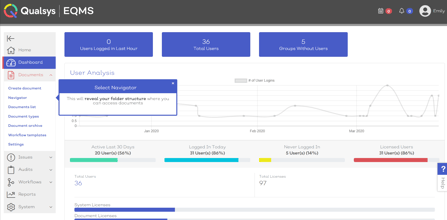
[Image: Embed reliable analytic data in EQMS]
5) Shared folders don't embed data integrity practices
Data integrity is essential for quality management teams. But when forms are scattered, duplicated and there is a lack of control, shared folders often lead to all sorts of data integrity issues.
With EQMS you embed good data integrity principles such as:
- Attribution: Secure logins combined with an audit trail for everything mitigates the risk of any data corruption
- Contemporaneous: Collect data anywhere via any mobile device
- Original: Push and pull API data
- Accuracy: No manual transposing of data
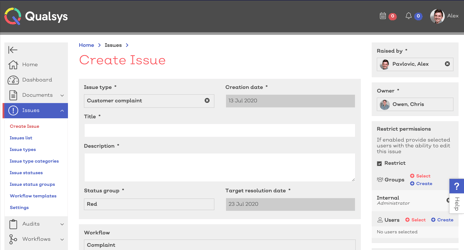
[Image: Capture the data fields and types you want in EQMS]
6) Shared folders lack security controls
According to IT portal, 21 per cent of a company's folders were accessible to every employee and 41 per cent of organisations had at least 1,000 sensitive files open to their entire staff.
With EQMS, behind the simple and attractive user interface, there are advanced controls which protect the confidentiality, integrity and availability of your documentation. The document control system provides complete confidence only the right person can view the right information at the right time.
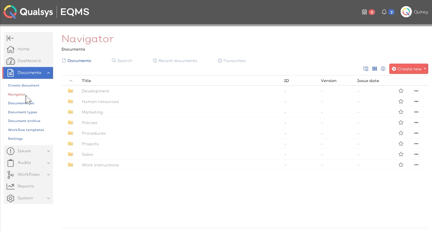 [Image: EQMS has a simple, personalised navigational structure for each user]
[Image: EQMS has a simple, personalised navigational structure for each user]
7) Risk assessments lack collaboration
When using spreadsheets for risk assessments, everything from risk identification to risk treatment plans tend to lack insights which can only be achieved through collaboration.
With EQMS, workflows ensure that when there is a business change, risk-based thinking holistic, embedded and collaborative. This means businesses can adapt faster than ever.
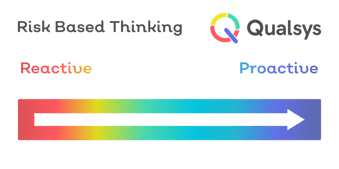
Want to learn more about why organisations replace shared folders with EQMS?
Download the use case matrix for examples of how every stakeholder benefits from an integrated quality management system:
|
|




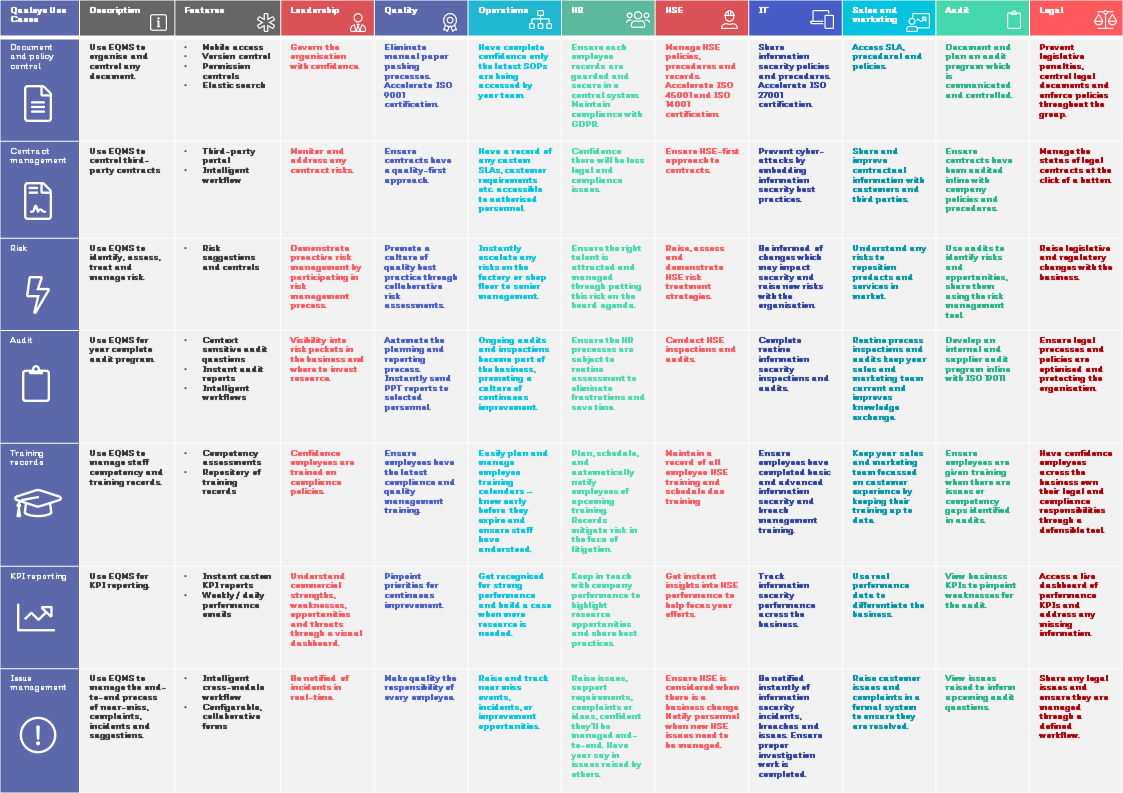

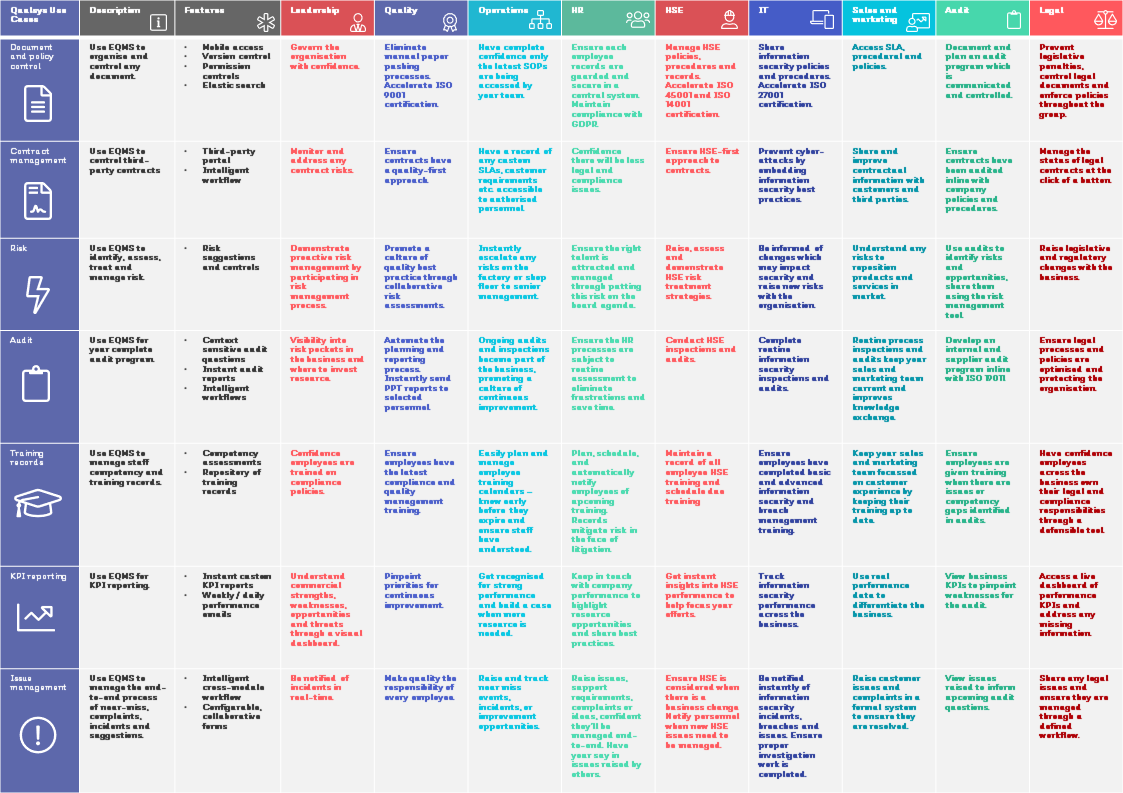

Share your thoughts on this article